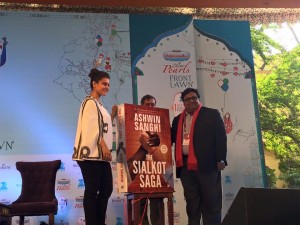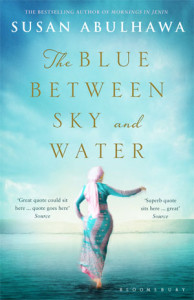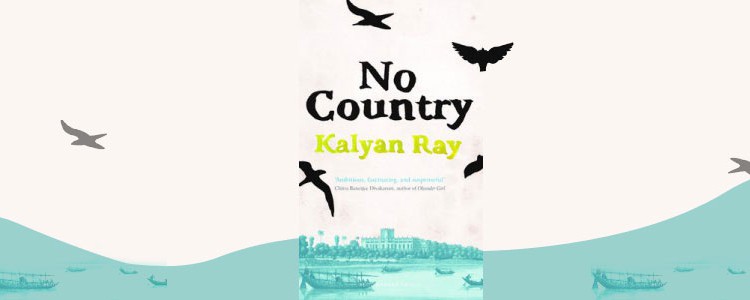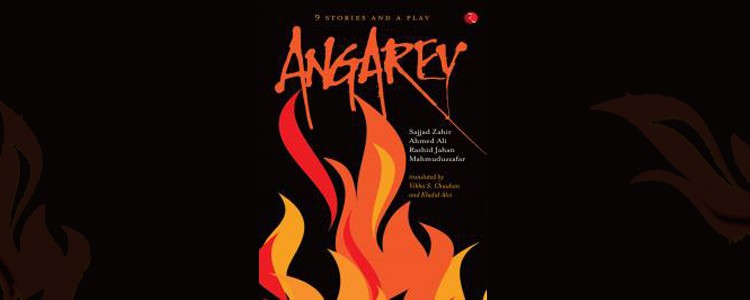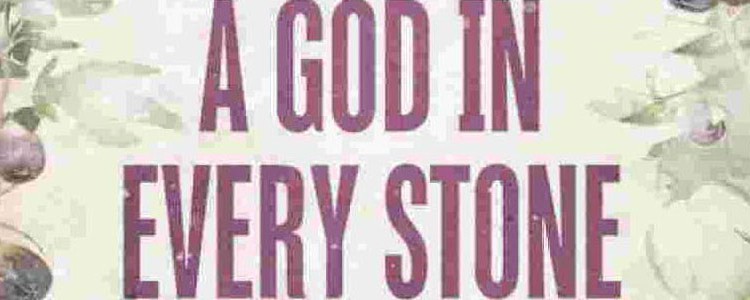Guest post: On Krishna Baldev Vaid
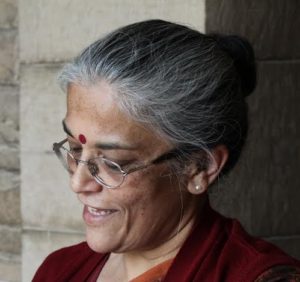 (Dr Shobhana Bhattacharji retired as professor of English Literature from Delhi University a few years ago. Her doctorate is in Lord Byron’s drama. She is fluent in English and Hindi. She reviewed Krishna Baldev Vaid’s novels when they were first published by Penguin India in the 1990s. Now the books have been rejacketed and reissued. Here is her review with a short introductory note.)
(Dr Shobhana Bhattacharji retired as professor of English Literature from Delhi University a few years ago. Her doctorate is in Lord Byron’s drama. She is fluent in English and Hindi. She reviewed Krishna Baldev Vaid’s novels when they were first published by Penguin India in the 1990s. Now the books have been rejacketed and reissued. Here is her review with a short introductory note.)
The translations of Krishna Baldev Vaid‘s two autobiographical novels were so different to each other that I read the Hindi versions to see whether the difference was in the originals. Till then, I had not read the original of a translated work I had to review on the principle that a translation is meant for a target audience and I tried to read it like an ideal target reader. Reading these novels in Hindi, however, taught me how much a translator, even if the translator is the author himself, can alter a novel. The Hindi title of Steps in Darkness is Uska Bachpan. The title of the second novel in Hindi, written 25 years later, was Guzra Hua Zamaana, which was also a famous Madhubala/Lata film song from the sad love story Shirin Farhad, filmed in 1956. It is Shirin’s final goodbye to her beloved Farhad as her ‘doli’ (bridal conveyance) leaves for her husband’s home. She begs Farhad not to accuse her of infidelity; her marriage to another man was not of her making. Vaid‘s novel is a searing farewell to his beloved pre-Partition India.
These two novels, written a quarter of a century apart, centre around Beero, who lives in a small town in undivided Punjab. In the first novel, confused by the adult world, and suffocated by the poverty of his home, Beero is young enough to enjoy snuggling in his grandmother’s lap. His parents are embarrassed to beg the shopkeeper for goods they cannot pay for, so they send Beero, whose dignity is lacerated by this as it is by his torn shorts and having to fetch his father from the gambling den. He escapes into his dreams. The filth and stink of their slum assail the reader but Beero entertains himself with a hornets’ nest in the drain. He dreams of tying some hornets together by their legs and making a kite for himself. None of his dreams is fulfilled. There is no money to buy or make kites. His happiness in his grandmother’s stinking lap is free, but is taken away because his mother hates it.
His friends unwittingly remind him of his unhappiness. Aslam, for instance, has a happy home and a beautiful married sister, Hafeeza, whom Beero gets a crush on. Beero’s mother hates “Muslas” and warns her son against them, but Beero eats at Aslam’s home and becomes “half a Muslim,” as he says in the second novel in which he also recites the kalma. Beero’s own home is riven with misery. The parents have terrible fights over money, the father’s drinking, gambling, and friendship with a sardar, called “Miser” by Beero’s mother who suspects her husband–rightly, as it turns out in the second book–of sleeping with the Miser’s beautiful wife. The mother spits venom and turns everything into tense misery. Her rages dominate Beero’s life but not his understanding. There is a searing passage where a bored Beero, who wants to hear about kings and princesses, listens to what he considers his mother’s complicated repetitious story of her early married life:
O, it was hell. Your Granny used to starve me for days on end. She used to lock me up in the lumber-room; I wonder I didn’t die of fear. No one ever cared for me. Neglected, I used to cry all by myself all the twenty-four hours. Your father was even then addicted to loafing. He never came home from school. Your Granny is to blame for spoiling him. She was always reproachful toward me because I had no sense. What sense could I have at that age?. . . Girls of my age were still playing hide-and-seek in the lanes while I had to wash mounds of clothes. In winter my tiny hands were always numb. I had fever every night; my bones used to ache; and all I had to sleep in was a worn-out blanket. Oh, the long dark frightful winter nights I spent shivering and crying, silently, for at the slightest sound your Granny would get up and start cursing the day she married her son to me. . . .Very often just as I lay down late at night after a day’s drudgery I would be commanded to press your Granny’s legs. While doing that if I happened to doze off I was kicked and beaten. (49-50).
Stories weave a complex pattern through the novel. There is, for instance, the richly ironic echo of the Ramayan in Beero’s mother’s name, Janaki. Beero’s love for fairy stories is soon replaced with fantasies of a fight-free home. Once he actually makes a fantasy come true. Anticipating a storm if his mother comes out of the kitchen and sees a hated neighbour talking to Devi, Beero’s sister, he efficiently lies to both parties of the potential war and gets the neighbour out of the house. Beero has two aims: to comprehend the world and to make it a less anxious place. When the domestic violence gets out of hand, he tries to die, but even that escape is not permitted. We leave him looking into a mirror which he has broken.
The wonder of Steps in Darkness lies in its graceful intermingling of the child’s confusion with solid details of the place, its people and their relationships. Its power is in its language. When one responds in two languages to a book, one wonders how much of Tolstoy and others one has missed. Some translation, of course, is better than none, and some translations are better than others. In this one, for instance, the curses, especially the vivid “progeny of swine” or “progeny of a dog,” require less than a second to translate back into the original and with it come stomach-knotting memories of school in Punjab where either curse would result in furious battles. Because of such violent consequences, “kutte ka bachcha” means much more–at least, it did forty years ago–as an insult than “son of a bitch,” and one is grateful that the author did not use “son of a bitch” in his translation. There are few glitches. For instance, “loaves” for “chapatis” doesn’t work. “Loaves” would probably remind most middle-class readers of Britannia bread. For readers unfamiliar with chapatis, to speak of two or three loaves per person, even among the well off, would be unbelievable.
On the whole, however, the translation has a cultural flavour that the second book does not. Its English is smoother, less defamiliarized, but sometimes, as in “soul” of a singer’s voice (27), one is uncertain what the original might have been. (It is “soz”.) Occasionally, the translation illuminates both versions, e.g. “gorilla” for “pehlwan.” Of course, not every reader will respond in two or, as these books require, three languages, but one misses the immediacy of Steps in Darkness.
There is a lot of mysteriousness in the novel. Why do Devi and her father weep at the end of the novel? What is Naresh’s relationship with his “mother”? Why is Aslam withdrawn after his sister leaves for Lahore? Some of the incomprehensibility is consistent with the child’s steps in darkness, but there should have been some way of making the reader know more than Beero.
The wonderful preface of Guzara Hua Zamana has been dropped in The Broken Mirror. In it, the character Beero talks of how the writer created an incomplete Beero in the first novel and then tried to flesh him out in later stories. Twenty-five years later, Beero tells him that he cannot escape another novel about Beero and that if the novelist is going to drag his feet over it, Beero himself will write it. At this point, he says, he fainted and when he recovered, the novel had been written.
In this first person narrative, Beero tries to piece together the images split by the shattered mirror of the end of the previous story but gives up the attempt because, as he says in passing, the partial stories he had written were lost in the Partition riots. The Broken Mirror is composed of his different worlds–Lanes, Bazaar, Lahore, and Borderlands. The English version does not have Beero’s caustic critique of the first novel. Other minor details that have been dropped also take away from a richness that Guzara Hua Zamana has. For instance, Allah Ditta’s incompetence is wonderfully conveyed in the casual comment that he must have murdered some Iranian doctor, stolen his degree, and set up practice here. No one believes this, of course, but the remark has a vigorous and delighted inventiveness which is characteristic of much Punjabi speech (and Bombay filmi dialogue).
Still, The Broken Mirror resolves much of the mysteriousness of Steps in Darkness. Although the publication details in this edition wrongly suggest that it was written nineteen years after Steps in Darkness, the style bears out that it is more than a sequel. The hesitation of the earlier novel which may have been the child’s as well as the author’s, and which resulted in withholding information from the reader, is replaced with a crisp narration of details. The powerful story of Beero’s adolescence and the unlooked for political freedom which incarcerates them in fear and Bakka’s barn does not need stylistic fancy footwork to impress the reader.
The most powerful aspect of The Broken Mirror is the building up of events towards Partition. Initially, the idea of separation remains in the background. Muslim, Sikh and Hindu friends hang out together. Then Aslam notices that the two Sikhs in their group have begun to talk strangely and advises Beero to be circumspect before them. Language and humour are the first casualties of this growing monster of hatred. Occasionally people mention the possibility of Pakistan. Then, with a mere change of tense, they talk of “when the riot occurs,” and Hindus begin to send their belongings to the “other” side. Finally, Pakistan is a reality. Communal positions harden, bewildering Beero even more than the adult world did in Steps in Darkness. In a magnificent few pages, Krishna Baldev Vaid narrates the activity of a Peace Committee meeting which has been called by the marginalized of the town: a Congress man, Keshav, In-Other-Words, and an aging prostitute who says she is like Gandhi because she does not discriminate against any community in her work. The unpredictable swings from hostility to brotherhood and back again are terrifying because they defy rationality, and because we have seen them again in the run-up to and aftermath of the breaking of the Babri Masjid. Then come the engulfing madness and killings of 1947.
Hiding in Bakka’s barn, Beero’s mind is a spate of words. Narrative breaks down just as everything else has. He struggles to understand events and himself. All he knows is that he lacks Keshav’s courage to die for a cause, and that he cannot kill anyone or blame any one side for being the prime mover of the violence. Eventually, in tearless bewilderment and with heads down, they go to the makeshift refugee camp in the school. There, beside an abandoned, bloodied baby girl, Beero finally cries.
With a book that achieves the nearly impossible business of hiding its craftsmanship, there is little one can do except break the unwritten code for reviewers and tell the story. But no retelling can capture the delicacy, intricacy, and strength of this extremely moving novel.
Krishna Baldev Vaid Steps in Darkness (trans. from Hindi by the author); The Broken Mirror (trans. from Hindi by Charles Sparrows in collaboration with the author) New Delhi: Penguin India, rpt 2017, 1995 (first publd. New York, 1962); New Delhi: Penguin, rpt 2017, 1994 (first publd. In Hindi, 1981)
14 June 2017





